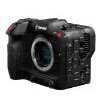Leaderboard
Popular Content
Showing content with the highest reputation on 12/18/2018 in all areas
-
I will never buy electronics from Amazon again
Grimor and one other reacted to scotchtape for a topic
No offense but this is very basic Amazon shopping "skill". Avoid any other vendor other than ships and sold by Amazon. (Unless it's a company selling it's own goods on Amazon.) What is the point of this post? You got burned because you bought from a crappy source and now blaming Amazon... Same thing can happen at eBay or Alieexpress or wherever you are deal hunting... You might want to boycott Amazon for other reasons (warehouse working conditions) but this is just silly.2 points -
What Do Y'all Think of The Kinefinity Mavo LF?
AlexTrinder96 and one other reacted to zerocool22 for a topic
Wow has it already been 10 years. what have I done with my life. At least Philips career took off from then and peaked and is now back where ever he started I guess. I remember Philip Bloom's 7D tutorial series. Which helped me out a lot when starting out. But dang this is the proof right here, dont fixate on gear and stop waiting on the gear to become affordable.2 points -
Olympus EM1-X Rumor
webrunner5 reacted to darrellcraig for a topic
EM1-X is 99% about appealing to sports and wildlife photographers. I don't think it has anything to do with video. I think they see an opportunity in high performance crop sensor cameras that Nikon kind of addressed with the D500 and Canon has abandoned since the mega selling 7D/7DII. Weather sealed, robust bodies, gripped to match big fast telephoto lenses, super high frame rates, etc. These photographers like crop cameras for increased reach and Canikon haven't really met their needs with their lame lineups of DX focused lenses. They are used to paying crazy amounts of money for glass (seen the price of a 400/2.8 or 600/4?) and so lots of money to chase there. Look at Panasonic 200/2.8, 100-400, the crazy expensive Fuji 200/2... all the crop manufacturers sense opportunity now that Sony/Canon/Nikon and maybe Panasonic are all focused on the FF battle.1 point -
Any alternatives to a G80/85?
Orangenz reacted to newfoundmass for a topic
The G85 is still an excellent camera in 2018/2019. For a lot of smaller projects I'll grab it instead of the GH5. IBIS works with vintage lenses, you just have to manually set the focal range.1 point -
SD Cards for GH5 - 2 x 128GB or 1 x 256GB?
mirekti reacted to scotchtape for a topic
Do not use Lexar and Panasonic, they just do not like each other. Even after the supposed firmware fix I still get the same bad behaviour with Panny + Lexar.1 point -
Fuji X-T3 and X-T4 discussion
thephoenix reacted to frontfocus for a topic
editing is fine with new hardware. Any 7th gen Intel cpu and modern gpus work fine. But 10 bit HEVC export is not hardware accelerated. Forget about that and think about other ways of delivery. It's just too time consuming. Personally I'd go for an iMac if you can find one for a good price or, if you go for a macbook, take the vega graphics. A 13" macbook pro or mac mini with e-GPU might be a great tool too. no waveforms on the camera. Focus peaking: set the camera to manual focus. In the video menu look for MF assist and set it to focus peak highlight. You can change the color and intensity1 point -
1 point
-

Blackmagic Pocket Cinema Camera 4K
webrunner5 reacted to Dunjoye for a topic
Something In between the UM4.6K and the Production 4k. This is what the UM4Ki image should have been like . Personally, I like it. This image ticks both boxes, Doc look, Film look and its more versatile1 point -
I edit in Cineform rather than h.264, which I think really helps performance. Media Encoder is also very good, I find. Some other notes: Dynamic link (Premiere <--> After Effects) is quite a system resource hog. I tend to only use it if it's going to really benefit the project workflow. For quick stuff I just use the old-fashioned render-out method, which is rock solid. In addition to the above, I have had some render issues with complex projects. I have had to mitigate this on occasion by rendering out in high-quality chunks (or layers), recombining on a timeline and then re-rendering. So that's another big minus point - but that's only been occasional, when working with massive files on particularly complex timelines.1 point
-
Lenses
webrunner5 reacted to leslie for a topic
great just in time for Xmas, i'm thinking what would make that really awesome is a two times stretch for added goodness1 point -

DJI Announcing Something New On The 28th
webrunner5 reacted to Emanuel for a topic
Impressive tool... : -)1 point -
I have had a pretty crash-free and bug-free experience with creative cloud personally. After Effects is completely stable as far as I'm concerned. I've had some minor niggles with premiere, and one serious problem - occasional hangs on using 'save as', which is annoying but can be mitigated with a workaround. Audition roundtrip works a treat. Photoshop and illustrator integration and stability are great. All in all is a fantastic suite, though whether the pricing is fair, I'm not sure. Certainly as a professional the price is easily worth paying.1 point
-

DJI Announcing Something New On The 28th
webrunner5 reacted to omega1978 for a topic
But if i will combine the footage on a night event in europe with 50p footage from other cameras is a problem.. Example:1 point -
Why Is Sony Fanboyism So Bad?
Castorp reacted to JurijTurnsek for a topic
I think it boils down to the underdog syndrome - Sony has been pushing innovation hard at the expense of it not being polished enough. I'd wager that most non-PRO users got used to the kinks and like using their cameras, but of course there are those that either really struggle to use them in paid shoots or are just expecting too much (coming from a slow-evolving, but very mature DSLRs). I would go as far as to say that if Sony had the same market share as Canon, they would have the funds to release more polished products, but with the same innovation. Now, with 2 new players in the segment, their first generation bodies suffer from the same kind of unpolishedness and the same loud users are downplaying the (same) kinks, because they can use their preferred brand forever (extreme hypocrisy). This kind of blind loyalty is therefore really hurting Sony's trajectory and their supporters have a right to be disappointed. The worst consequence of all this are now the incessant attempts to label a review that is not in line with users' subjective feelings (and needs) being labeled as biased and fake news (as if reviewers that test an incredible variety of gear don't a have more objective opinion as someone who uses a limited set of gear). I find it most puzzling the attacks on Dpreview reviews, since they live from selling gear from all brands, and the same people putting vloggers on the pedestal where the referral links are showed in the viewer's face.1 point -
Actually his conclusion about the Pocket having better highlight retention than the XT-3 seems a bit skewed. He base's this on having more tools in Resolve, because it's raw. But in fact when you look at the files, the Xt-3 has far more chroma info. Once again, grading in the eyes of someone who doesn't appear to know that much about grading seems to be all based on what button you can click on or what LUT you can apply. Which is just silly as far as I am concerned. If you just look at the files on the scopes you can see that the BMPC4K is clipped more harshly and that it is missing chroma info by comparison. This would be consistent with my experience of BM in general. Images have info, but lack chroma range. Lastly, he incorrectly states that the URSA has 16 stops of dynamic range. No way in heaven this is true. I would be surprised if they have more than 13.5 to be honest...1 point
-

Ursa Mini 4.6K dynamic range (Cinema 5D)
IronFilm reacted to TheRenaissanceMan for a topic
C5D also doesn't understand how to use a Xyla chart properly. You expose so the brightest chip is just BARELY clipping, then count down from there. Every C5D test I've ever seen clips more than one chip, and I can never figure out why.1 point -

What Do Y'all Think of The Kinefinity Mavo LF?
tweak reacted to webrunner5 for a topic
That means his review of it will be out in about 10 months.1 point -

DJI Announcing Something New On The 28th
webrunner5 reacted to Alex Uzan for a topic
I got mine today. I haven’t check the image quality yet, but two things : 1) this camera is ntsc only, no 4k50 or 25. Only 60 and 30. 2) the grip is getting hot quickly, and it really cold around me. I can not imagine what it would be under the sun.1 point -
After a couple years on other software I decided to give PS and LR a go the other day and signed up for a subscription. I moved from the UK to the Netherlands and it took Adobe support about two hours to change my account. It was very much like the thread above. A trip to hell. Made me immediately regret getting back on Adobe.1 point
-
Blackmagic Pocket Cinema Camera 4K
mercer reacted to BenEricson for a topic
This has been said over and over but is not true. None of the BMP4K images come close. They're not even in the same realm in my opinion.1 point -
I agree with the first part. People paid 3800$ for a much lesser A7s and II. Now, the second part, I know a camera that shoots prores and Braw -soon- and has a mini XLR, and larger screen(!) but it shoots 4K/60 only, and it costs 1000€ less than the GH5s (in my country!). I do not know where Olympus is headed, but it ain't good.1 point
-

Variable ND filters for video?
chrisE reacted to webrunner5 for a topic
That is what you get for buying those big fancy lenses. ?1 point -
If you are not shooting LOG or HLG or don't want to grade there is little point in 10bit and 8bit is plenty My own tests of 150mbps vs 400mbps show the only advantage ( I only shoot LOG or HLG) is during the grading where the 400mbps codec is easier on the hardware. Visually I can't tell the difference and also can't 'break' the footage when applying even hefty tonal changes in terms of revealing artefacts. One reason you may want an ext recorder is that of you are recording a lot of footage it may be cheaper than V60/90 cards. I can see 10bit vs 8bit differences when I grade as its visible in the scopes. You have not understood the bit depth data that DXO state - more research needed1 point
-

Panasonic GH5 10 bit internal recording not good enough
Lux Shots reacted to fuzzynormal for a topic
It's good 'nuff for me. Serious question: are people complaining about this tech actually trying to make anything "for reals" with it? If this is strictly a technical discussion, I'll disappear --but I'm operating under the assumption that some of us are actual creatives. Yeah, I'm feeling salty, but I do find it amusing that many shooters prone to making videos of municipal park leaves, or people walking through tourist destinations, care so much about the the barely discernible nuances and intricacies of codecs. I don't know, maybe I shouldn't be bothered by it. If people want to grab that tiger by the tail, go for it. Who am I to say?1 point -
Panasonic GH5 10 bit internal recording not good enough
Lux Shots reacted to MurtlandPhoto for a topic
Not a technical comparison, but these guys saved me the time to do my own testing months ago. Haven't looked back since ?1 point -
Yes that's true (The HDMI out on my Sony A7s and A7r2 is very robust ) but it still doesn't change the fact that you don't need a 10 bit screen to benefit from a 10bit codec. I have argued many times previously that 10bit is not a cure-all. The advantage in video of 10bit is that in a YCBCR codec most of the data is stored in the Luma channel so higher rates of compression can be applied without running into some of the more obvious tonal artefacts. This I assume is why the 'theoreticaly inferior' 150mbps 10 bit codec can comfortably be used to shoot V-LOG, be subject to lots of tonal correction and still come out looking very good where as most internal 8 bit codecs fall apart. At the end of the day most users are not choosing their codecs after doing theoretical data analysis exercises as it's not hard to see the artefacts of a poor codec once you start grading esp if you shoot LOG profiles.1 point
-
Panasonic GH5 10 bit internal recording not good enough
Lux Shots reacted to KnightsFan for a topic
I think you misunderstand me. We all know from experience that the quality of interframe compression varies based on the amount of motion in the frame. You even showed that as an example with the water fountain. I think it is faulty logic to assume that you can come up with a generic file size for an I frame, out of a long GOP file. I'll try to explain myself more clearly: "With an average video bit-rate of 94 Mbps each GOP has 45.3 Mbps" So far so good. We have 94 Mbits to describe a second of footage. "which means an I Frame has around 13.1 Mbits or 1.57 MB per frame" Ok, that's true. I can see from your chart that the I frame is 1648326 bytes, so that I-frame is indeed ~1.6 MB. "and an equivalent All-Intra bit-rate of approximately 328 Mbps." This is where I disagree. You are apparently multiplying the 13.1 Mb/frame by 25 frames/sec to get the "equivalent" data rate of 327.5 Mbps. You are assuming that the amount of data in a B frame (247334 bytes for example) is the SAME amount of data needed to retain the fidelity of that frame that is required by the I frame in total. That is, you assume that: 1648326 absolute bytes = 247334 delta bytes Where "equivalence" means that they will retain the same amount of information relative to the original, real world scene that is being encoded. And we know, based on your example of the water fountain, that interframe compression quality depends heavily on what is being shot. Therefore, the idea of "equivalent" data rates being used as a measure of actual information retention is faulty, unless you specify what type of data is encoded. I actually think you are right about Prores retaining more information, but like I said you don't have evidence for it. And beyond that, the GH5 could have such poor image processing that uncompressed HDMI actually has no benefit over the internal recording either so even if Prores is theoretically better, concluding that people need an external recorder to get 10 bit quality does not seem justified.1 point -
You don't need a 10bit screen to see the benefits of using a 10bit codec - the lack of banding, posterization and macro blocking artefacts after applying tonal adjustments especially with LOG footage are it's big advantages.1 point
-
1 point
-
Panasonic GH5 10 bit internal recording not good enough
Lux Shots reacted to KnightsFan for a topic
Thank you for the clarification. I am fairly certain now that I've been following your argument correctly. I do understand interframe compression, by the way. However, you can't simply compare bitrates, even adjusted for motion artifacts. There are different algorithms being used. You need to show, with image analysis or an analysis of the algorithm itself, that your method of comparison is valid. Again, for your conclusion, you have not shown that Prores is better. You are still just comparing the size of I frames from codecs that use different algorithms. That's why I suggest doing an actual analysis on real images. Chroma subsampling is for static images, and jpegs do use chroma subsampling. "[Chroma subsampling] is used in many video encoding schemes – both analog and digital – and also in JPEG encoding." (https://en.wikipedia.org/wiki/Chroma_subsampling)1 point -
Im grading in Davinci Resolve, and im using an old Dell U2711 (which is 8 bit), and working in REC709. Used to grade 5D Raw and Sony SLOG2. In the last couple of month i started grading in ACES, and this is where i can feel the 100Mbps 8bit from Sony is not enough.1 point
-
Panasonic GH5 10 bit internal recording not good enough
Lux Shots reacted to KnightsFan for a topic
You conclude with "If you want to produce genuine 10 bit colour high dynamic range footage you need to buy an external recorded capable of supporting ProRes 422 HQ or there is not game." That's why I'm suggesting an actual comparison with Prores that uses real world examples. If you just want to compare between internal codecs, that's a misleading conclusion. Not all Jpegs are the same, you can actually specify the quality amount and chroma subsampling of a Jpeg when you encode it. Could you specify which type of jpeg you are referring to? Also--what does jpeg have to do with any of this? I'll admit I'm having a hard time understanding why you use it as an example. Is that a valid assumption to make, though? My understanding is that motion artifacts is one of the main reasons people use All Intra codecs. To summarize my skepticism: It seems to me that you are judging codec quality purely in terms of adjusted bitrate. If I am misunderstanding, my apologies.1 point -
i have tried to grade 400Mbps 10 bit GH5 VLOG footage and i was impressed how well the codec holds even with extreme grading. I could not see any difference even in 400% magnification.1 point
-
Panasonic GH5 10 bit internal recording not good enough
Lux Shots reacted to interceptor121 for a topic
The internal codecs are pretty good at FHD they are excellent and at 4K only the 422 is poor This is mathematical demonstration am not suggesting what you should use or not or if you want to buy a recorder or not that is your choice but I would not trust youtube as a tool for comparison amongs recorder and internal there many other benefits in using a recorder other than bitrates a larger screen helps to expose and focus and HDR Read the post carefully the comparison is between the codecs of the GH5 themselves and therefore relative and factual it has nothing to do with perceived image quality take a jpeg of an 8 mp shot compress it to thise sizes and see by yourself if you notice a difference Assuming no artefacts from motion interpolation the size of the I frames determines the quality my calculations just extract the information it makes me smile that some can post comparison between codecs not even understanding how they work and get away with it so I wanted to provide some back up info download ffprobe shou few clips of your choice at different settings and the averages won’t change relative image quality will change but if you can see it or not depends on many factors that are also subjective It does not matter what you shoot the codec processes everything exactly the same the GOP structure is fixed and the ratio between the various frame pretty much too with minimal variations so you dont actually need to see what you shoot to test if it is correct or not it is a fact you see from the data-1 points


